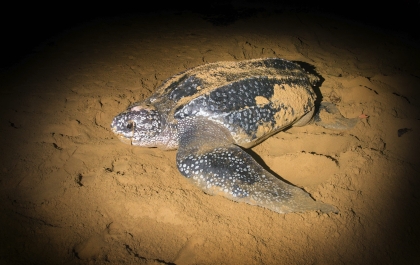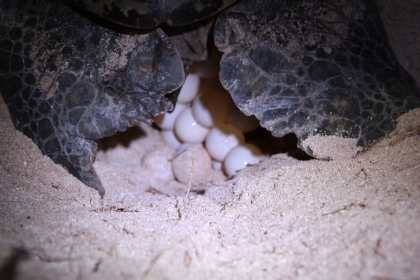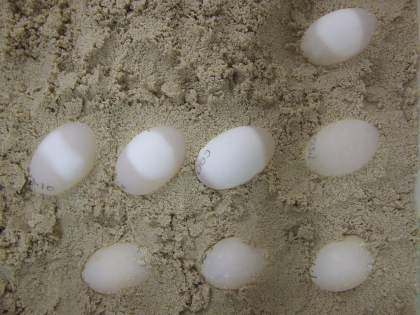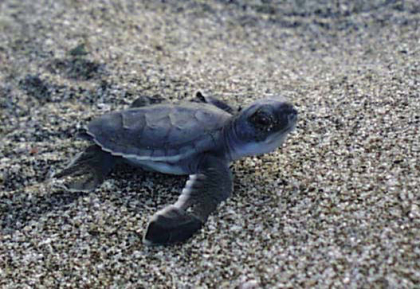Sea turtle reproduction and conservation:

Sea turtles are large, air-breathing reptiles that live and nest throughout tropical regions of the world. They come ashore to lay eggs that incubate in the sand of tropical beaches and make long-distance migrations each few years to do this. Our research has been investigating this reproductive process and the conditions under which eggs and hatchlings develop.
We have identified the process by which embryos pause development while inside the female turtle and then recommence after being laid, as well as the reproductive ecology of several species.
Some comparative study has been undertaken with saltwater crocodiles, lizards and freshwater turtles, all of which also lay eggs. Our work is aimed at better understanding the conditions necessary for successful development, so that we can take effective management decisions, particularly in the face of stresses such as climate change.



Representative publications:
Williamson, S.A., Evans, R.G., Robinson, N.J., Reina, R.D. 2017. Hypoxia as a novel method for preventing movement-induced mortality during translocation of turtle eggs. Biological Conservation 216, pp 86–92. doi: 10.1016/j.biocon.2017.10.009
Rafferty, A.R., Johnstone, C.P., Garner, J.A., Reina., R.D. 2017. A 20-year investigation of declining leatherback hatching success: implications of climate variation. The Royal Society Open Science 4 170196. doi: 10.1098/rsos.170196.
Williamson, S.A., Evans, R.G., and Reina, R.D. 2017. When is embryonic arrest broken in turtle eggs? Physiological and Biochemical Zoology. In press. doi:10.1086/692630
Rees, A.F., Alfaro-Shigueto, J., Barata, P.C.R., Bjorndal, K.A., Bolten, A.B., Bourjea, J., Broderick, A.C., Campbell, M.L., Cardona, L., Carreras, C., Casale, P., Ceriani, S.A., Dutton, P.H., Eguchi, T., Formia, A., Fuentes, M., Fuller, W.J., Girondot, M., Godfrey, M.H., Hamann, M., Hart, K.M., Hays, G.C., Hochscheid, S., Kaska, Y., Jensen, M.P., Mangel, J.C., Mortimer, J.A., Naro-Maciel, E., Ng, C.K.Y., Nichols, W.J., Phillott, A.D., Reina, R.D., Revuelta, O., Schofield, G., Seminoff, J.A., Shanker, K., Tomás, J., de Merwe, J., Van Houtan, K.S., Vander Zanden, H.B., Wallace, B.P., Wedemeyer-Strombel, K.R., Work T.M., Godley, B.J. 2016. Are we working towards global research priorities for management and conservation of sea turtles? Endangered Species Research 31, pp 337-382. doi:10.3354/esr00801
Rafferty, A.R., and R.D. Reina. 2014. The influence of temperature on embryonic developmental arrest in marine and freshwater turtles. Journal of Experimental Marine Biology and Ecology 450: 91-97.
Rafferty, A.R., R.G. Evans, T.F. Scheelings and R.D. Reina. 2013. Limited oxygen availability in utero may constrain the evolution of live-birth in reptiles. The American Naturalist 181: 245-253.
Rafferty, A.R., and R.D. Reina. 2012. Arrested embryonic development: A review of strategies to delay hatching in egg-laying reptiles. Proceedings of the Royal Society B: Biological Sciences 279: 2299-2308.
Reina, R.D., J.R. Spotila, F.V. Paladino and A.E. Dunham. 2009. Changed reproductive schedule of eastern Pacific leatherback turtles Dermochelys coriacea following the 1997–98 El Niño to La Niña transition. Endangered Species Research 7: 155-161.
